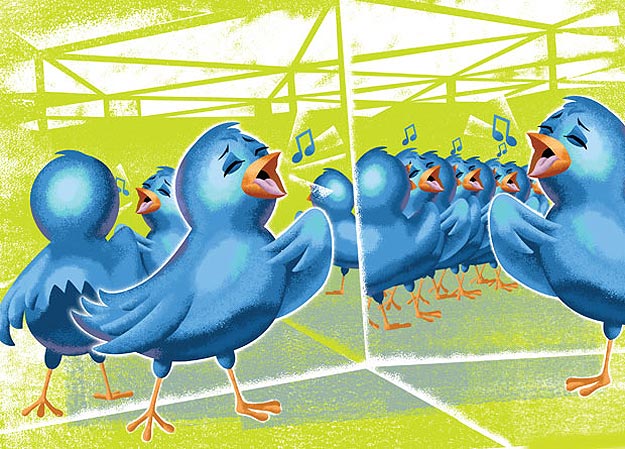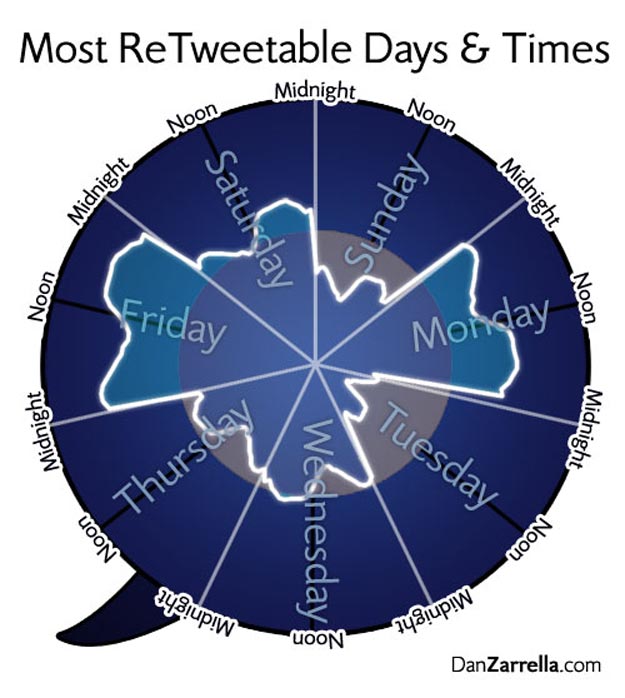I have seen so many posts written about the dynamics of Twitter retweets, and every time I read one, I always want to write my own on the topic. I’m excited I’m finally taking the time to do that. There is so much psychology and power behind a retweet, and I’m about to share all that with you. To me, a retweet is one of the most magical aspects of Twitter.
Did you know you can go to Retweet Rank and put in anyone’s username to see how he or she ranks as far as Twitter RTs? I’m listed on there today as number 3,958 on Twitter which is in the top 99.98 percentile. I’m not saying that to brag. I’m truly humbled by each retweet. I only bring that up so you understand my interest in this topic.
Why does one person receive more RTs than another? I’ve been studying this phenomenon for a while now, and here are some things I’ve learned about Twitter retweets. First of all, since I tweet so much, I don’t show up in Twitter search and haven’t for about a year. You know what? That doesn’t even matter. In my opinion, that proves an RT is more than just about content that someone might find when doing a search.
In my opinion, the letters RT really mean, “I want you to see this because I like it, and you might like it too.” It’s a way to show the original tweeter support and send them some Twitter love. The fact we can simply hit a button to communicate all that with such a small amount of effort is social media brilliance at its best. In addition to that, from a content perspective, I do think it’s important to keep the good stuff circulating. It’s one of the things that keeps Twitter strong and keeps people coming back to the site.
Some people say that retweets are more powerful than tweets; however, our statistics here at Bit Rebels show something different. We notice a significantly higher percentage of people click on a link when it’s a regular tweet than when we retweet someone who tweeted one of our articles. It was a very interesting discovery to find because I didn’t expect that.
Personally, I think it’s completely cheesy to add “Please RT” to the end of a tweet, but a lot of people do it. Statistics show that by doing that, you will actually get more RTs. However, to me, it seems a little #desperate. I’ve even seen some people so desperate for an RT that they RT themselves. I know, it’s so stupid. Trust me, if you start doing this on all your blog posts, people will start to ignore you.
Another thing worth noting here is that just because you may have a lot of retweets on a post, it doesn’t necessarily mean people are reading the content. We’ve all seen examples of YouTube videos that are RT’ed a hundred times, but when you click on the video, it has like 20 views. That’s the kicker about powerful headlines. If you write something catchy, people will RT it just based on that, without necessarily reading it. We have a post on Bit Rebels entitled How To Make A Baby, and every time it’s tweeted, it gets a ton of RTs because people love to add their fun comments in the tweet, but that doesn’t necessarily mean the pageviews skyrocket because they aren’t actually clicking on the link.
In addition to this, we all know that some accounts on Twitter are not real people, and they are set up to retweet posts based on keywords, RSS, etc… Usually the only people who follow these bots are other bots, which basically makes their RT useless.
Does all this mean that Twitter RTs don’t really have the value that many of us place on them? A site called Simply Zesty ran their own RT analysis a few months ago, and came up with some interesting conclusions. For them, on their blog, they found that the click through rate on RTs was about 0.33%, which is disturbingly low.
So, this brings us to the question of pageviews. How many pageviews can you expect per RT? That depends on several factors. Some people believe it depends on the number of followers that the people who RT it have; however, I believe it is more complex than that. A lot of people have an overlap in followers. For example, if you and twenty of your Twitter friends RT the same post, you will all see it in your Twitter timeline, but you won’t click on the link 20 times. So, unless you do an analysis to determine the overlap of each person’s followers, in my opinion, that is not an accurate gauge.
Let’s look at an article I wrote last month called Twitter’s Top 75 Badass Women. It has 1,168 RTs and 820 facebook shares. The pageviews on that article are approximately 15,600. Is that high? Is that low? I don’t know. I’ll have to research it more to determine the accurate answer. There are tools designed to help measure this information, like Tweet Reach, but most of the time, I find those tools to be wonky and incomplete.
My conclusion is that although many people are still obsessed with increasing retweets, and new articles on this topic are published every day, maybe we should put our focus elsewhere. I haven’t ever before and will not start focusing heavily on my own RTs. As we’ve seen in this article, perhaps we put to much value in an RT anyway.
Instead, I will continue to work on providing quality content and increasing my influence on Twitter. You can determine your own Twitter influence by going to Klout. The more I study this stuff, the more I realize that having influence on Twitter is the real Holy Grail, not a bunch of RTs on a random post. What do you think?
Image Credits: [Weylon Smith] [Dan Zarella] [Webbiquity]


